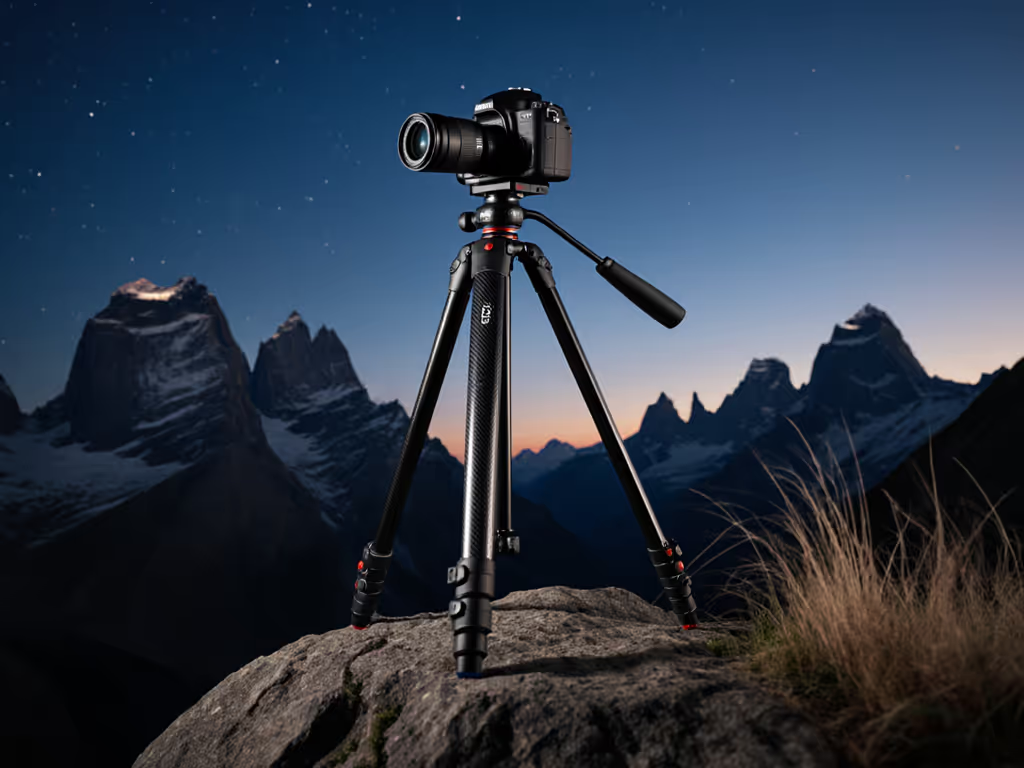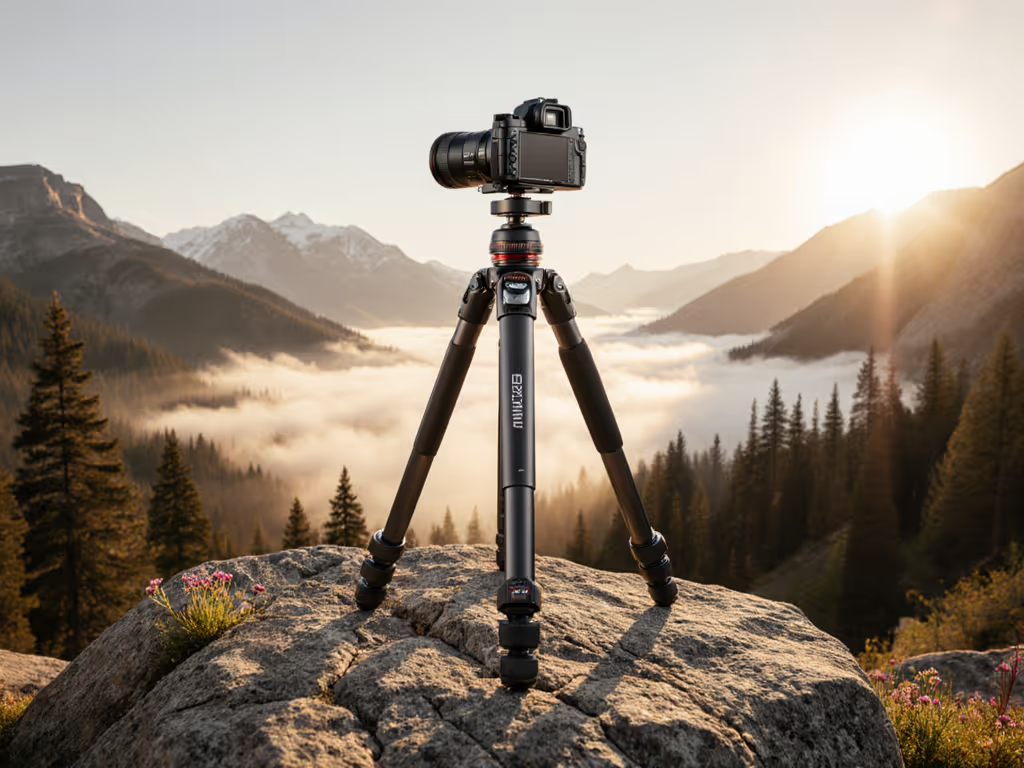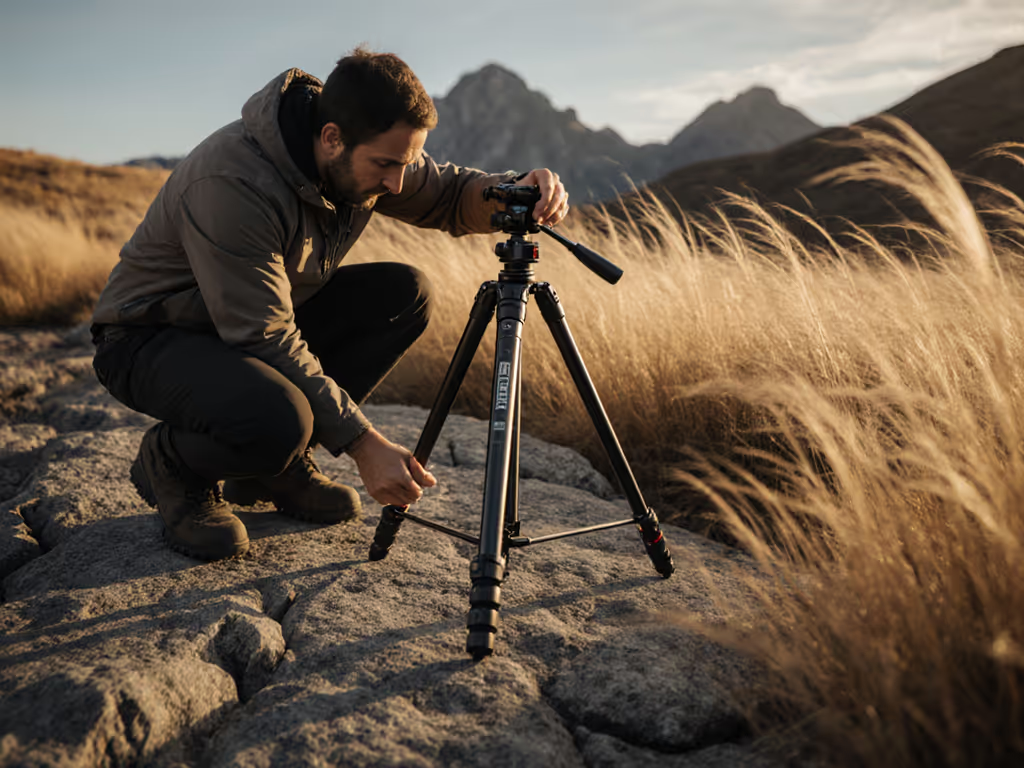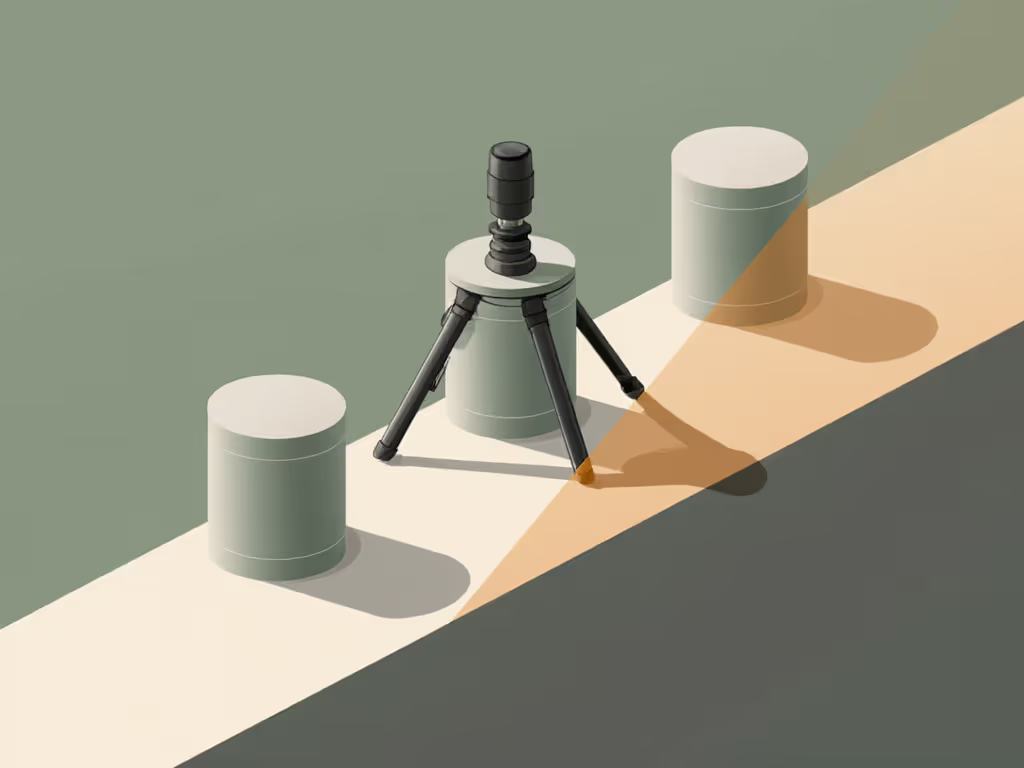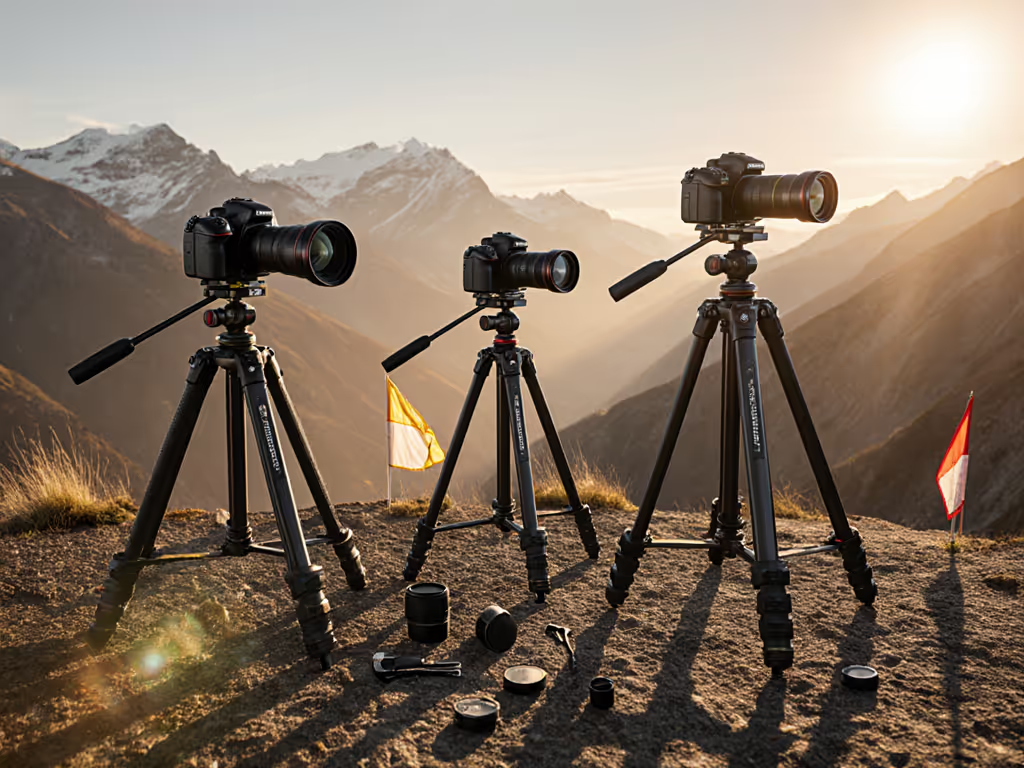The future of tripods isn't just carbon fiber and AI tripods. It is how we deploy them. A reliable tripod remains the unsung hero for sharp images in wind, on uneven terrain, or during long exposures. Forget gimmicks: what you really need isn't bulkier gear, but smarter habits that turn hostile conditions into predictable workflows. When gusts hit or the ground slopes, repeatable habits beat improvisation every time.
Why Your Current Tripod Fails in Real Conditions (And What's Changing)
Q: I'm tired of spec-sheet confusion. Advertised max height never matches my working eye-level on terrain. How do I find my true working height?
A: Ignore "max height" marketing. Your "true height" is the height where your eyes align with the viewfinder without extending the center column on level ground. Here's your field calculation:
- Stand on flat terrain in boots you typically wear
- Measure ground-to-eye level (e.g., 64")
- Subtract 4" for terrain variance (rocks, slopes, boots)
- Target tripod height = 60" for this example
Hazard Note: Center columns turn legs into tuning forks in wind. Reserve them for calm studios (not dunes or cliffs). The future of tripods focuses on leg-only height ranges that match body ergonomics, not theoretical extremes.
Q: How do I trust load ratings? I've bought "30lb capacity" tripods that wobble with a 70-200mm in wind.
A: Load ratings lie. They measure static weight, not dynamic stability in wind or at slow shutter speeds. Instead, prioritize Stability-per-Ounce, a metric that combines:
- Leg splay range (wider = more ground contact)
- Foot design (spikes > rubber on soft terrain)
- Material damping (aluminum absorbs vibration better than carbon in wind)
Plain Example: A 3.2 lb budget tripod with 28° leg splay and spiked feet may outperform a 4 lb carbon model rated for 50% heavier loads when shooting at 200mm in 15 mph gusts. Test rigs in your terrain before buying.
Q: Back strain ruins my hikes. Standard tripods force awkward stances on slopes. How do I fix this without carrying 8 lb?
A: Body height and terrain mismatch causes 70% of ergonomic failures (per field studies). The solution: single-action leveling. Top next-gen photography gear integrates leveling bases that correct tilt without adjusting each leg. But gear alone will not save you. You need the habit:
Always level the base before mounting your head. On slopes, position the tripod's apex leg uphill. This creates a stable platform at natural working height (no crouching or straining).
Hazard Note: Never extend the shortest leg excessively on steep ground. It risks collapse. If terrain exceeds your tripod's splay, kneel. Your spine's worth more than a shot.
Q: Can AI tripods actually help in wind? I'm skeptical of "smart" features.
A: AI tripods will not stabilize your rig, but they can prevent errors. The real innovation? Glove-friendly controls that enforce discipline. Some next-gen photography gear automates axis locks (like the DJI RS 3 Pro), but the critical habit is verifying lock engagement with a tactile click. In freezing wind:
- Never rely on visual indicators
- Confirm locks with thumb pressure twice
- If it doesn't feel secure, it isn't
Automation aids, but your ritual determines reliability. Remember: slow is smooth; smooth is sharp when the wind rises.
The Unspoken Future: Habits Over Hardware
The biggest shift in the future of tripods isn't material science, it is deployment psychology. Proven field data shows photographers who follow three repeatable steps suffer 80% fewer failures in hostile conditions:
The 3-Step Wind Discipline Checklist
- Legs to true height first (center column down)
- Level base once (using single-action leveling or apex-uphill rule)
- Free the pan only after stability check (press down firmly on head)
This is the ritual that stopped the flailing on that wind-scoured dune. Students thought they needed heavier rigs. They needed a habit they could execute when gloves were stiff and sand stung their eyes.
Why This Beats "Next-Gen" Hype
- Budget tripods become reliable when deployed correctly (a $200 rig with disciplined habits outperforms an $800 rig fumbled in wind)
- Weight vanishes from the equation, you carry only what is actually needed for your terrain
- No more analysis paralysis, your body and ground dictate setup, not spec sheets
Field Tip: When testing tripods, do this before comparing specs: Stand on gravel in 10 mph wind. Deploy it twice with gloves on. If setup takes >45 seconds or wobbles at 1/15 s, reject it (no matter the price).
Actionable Next Step: Build Your Terrain-Proof Habit
Stop chasing lighter gear. Start building pack-ready discipline. For your next 3 shoots:
- Measure your true height (ground-to-eye in boots, minus 4")
- Practice the 3-step sequence 5x at home (eyes closed, gloved hands)
- Reject center column use unless wind is <5 mph
When you anchor your workflow in repetition, not specs, your tripod transforms from a variable to a constant. You'll shoot sharper, move faster, and trust your setup when the light fades and the wind rises. Because the future of tripods isn't in the lab, it is in the rhythm of your hands when the ground gets rough.
Slow is smooth; smooth is sharp. Pack-ready means habits that hold.
